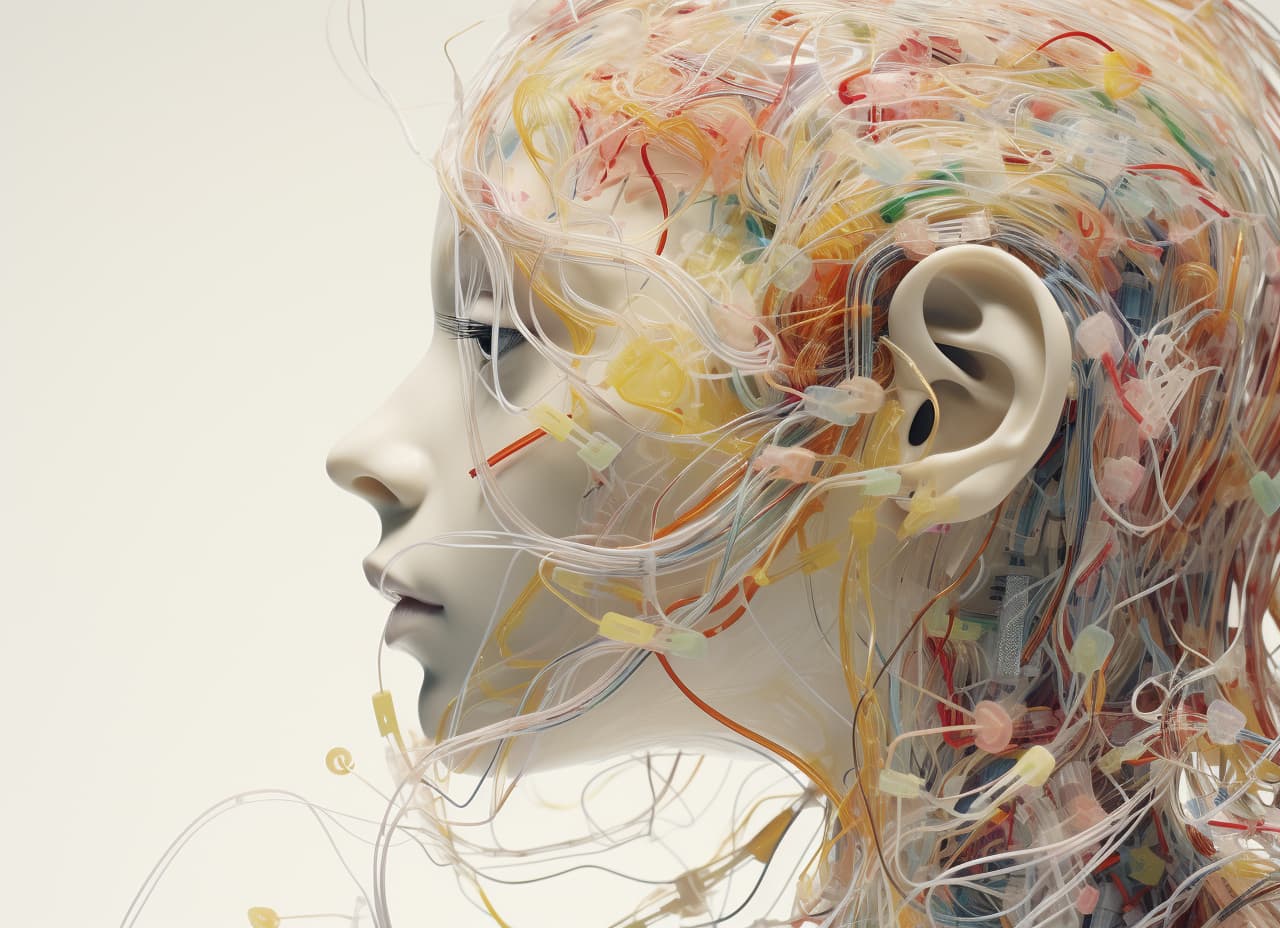User interfaces have undergone a rapid transformation with the advent of ChatGPT and Generative AI as a whole. We are steadily moving away from interfaces that merely accept commands, towards those that actively collaborate with users in a more natural, human way. Several key AI trends are catalyzing this evolution.

In our previous discussion, I outlined why ChatGPT's conversational interface represents the real revolution. By harnessing a chat-based format, OpenAI succeeded in making one of the most advanced AI systems accessible to everyday users.
This is something many companies have attempted with similar core technology but failed to execute as effectively. The key was finding an interface paradigm – natural chat – that allowed humans to interact intuitively with powerful AI. In this article, we will explore how conversational interfaces are poised to transform user experience and UI/UX design across industries.
ChatGPT only hints at the expansive impact to come as interfaces evolve from rigid menus and forms to free-flowing, adaptive conversations. The implications for design principles, information architecture, personalization and human-AI symbiosis are profound. Let's examine how conversational AI promises to reshape our digital future by making sophisticated technology feel simple, natural and human.

The Simple Genius of Chat Interfaces
Language is the cornerstone of human connection, from ancient stories told around campfires to the digital messages exchanged today. When one considers the vast capabilities of generative AI, it's tempting to expect complex, flashy interfaces. Yet ChatGPT took a different path - the elegance and universality of chat.
Rather than wrapping GPT-3 in elaborate designs, OpenAI focused on the essence of conversation. This wasn't happenstance but deliberate choices to craft a digital conversationalist. ChatGPT, with all it's power didn't overwhelm users with complications or new interfaces. Through chat, anyone could converse with advanced AI as they would another person.
This human-centric approach feels refreshing. It taps into our innate desire to communicate, stripped down to the core elements. The interface echoes how we've connected since the beginning - through simple conversations.
The Rise of Conversational Interfaces
One of the most visible shifts has been the proliferation of conversational interfaces, such as chatbots and voice assistants. By leveraging natural language processing (NLP), these interfaces aim to understand user requests and respond conversationally. However, today's chatbots and voice assistants often lack nuance, missing important context cues. Interactions can feel rigid compared to fluid human conversation.
As NLP and generative AI advance, conversational interfaces are becoming more capable. With better comprehension of preferences, context, and sentiment, they can handle increasingly complex interactions. For instance, sentiment analysis is beginning to evaluate the emotional undertones in user input, allowing for more natural, human-like exchanges. Eventually, intelligent assistants may manage workflows by delegating tasks across applications based on context and user priorities.
Anticipating User Needs
Another key trend is anticipatory interfaces that predict user needs proactively. With access to vast datasets, machine learning models can discern usage patterns and preemptively surface relevant information.
These technologies are inching closer to making machines understand not just the words, but the intent and emotion behind them. For instance, sentiment analysis is making strides in deciphering the emotional undertones in user inputs, which is a step towards more empathetic and human-like interactions.
Recommendation engines also leverage user data to provide personalized suggestions and shortcuts. As predictive capabilities grow more advanced, interfaces may one day act as collaborative partners that actively assist users, rather than just responding reactively.
Adapting to Users
Interfaces are also becoming more adaptive, modifying their display and functionality to individual users. User modeling techniques track preferences and behaviors over time to offer customized experiences. Interfaces may simplify workflows for novice users versus experienced ones. They can also dynamically adjust layouts and content based on user traits and contexts.
For instance, interfaces could optimize display formats for a user's device, location, language, abilities, and typical usage scenarios. More broadly, adaptive interfaces aim to be inclusive design solutions that cater to diverse users and accessibility needs.
Driving Conversions Through Conversation
We cannot discuss UI/UX without thinking about conversions, or what we actually want the user to eventually do. While conversational interfaces introduce new design opportunities, the endpoint remains driving conversions and sales. As designers script dialogue flows, the conversations cannot be treated as indulgent exchanges but purposeful funnels towards desired actions.
Every phrase and query results in branching paths, some leading closer to conversions, others further away. Designers must strategically craft each branch point to guide users towards conversion events through conversational cues.
For instance, if a user asks about shipping timeframes, the assistant's response could highlight available express shipping options before answering the question directly. Or a conversation about product features could segue into a promotional offer once interest is established.
Personalized Engagement, A Conversion Catalyst
Conversational interfaces foster a one-to-one interaction, offering personalized responses based on user input. This personalized touch can enhance user engagement, making users feel heard and valued. When users engage in meaningful interactions, they are more likely to develop a positive perception of the brand, which in turn, can bolster conversion rates.
Smoothing the Conversion Path with Guided Journey
Conversational interfaces act as digital concierges, guiding users through the website or app, answering queries, and providing recommendations. By providing real-time assistance and relevant information, these interfaces can help smoothen the user journey towards the desired action, be it making a purchase, signing up for a newsletter, or any other conversion goal.
Building Trust: The "Human" Touch
Having a conversational interface that understands and responds in a human-like manner can instill a sense of trust and ease among users. Trust is a critical factor that influences conversion rates. When users trust a brand, they are more likely to take the desired action.
Analytics and Insights: Fine-tuning the Conversion Strategy
Conversational interfaces also open the door to a wealth of analytics and insights. By analyzing the conversations, businesses can glean valuable insights into user behavior, preferences, and common queries. This data can be leveraged to fine-tune the UI/UX design, content strategy, and overall conversion optimization efforts.
With each phrase exchange, designers must keep conversion goals in perspective, leveraging conversational context to nudge users closer. Well-designed conversations feel natural while purposefully steering towards target actions.
Testing and optimization remain vital as designers experiment with conversational triggers that resonate best with their audiences. The AI behind the interface can also learn and optimize conversion performance based on user data over time.
Conversational interfaces essentially transform static conversion funnels into dynamic journeys tailored to each user in real-time. The fluid interplay between designer intent and user direction requires carefully plotting conversion branch points within the conversational flows.
They bring a new level of conversion optimization adapted into almost real-time. Though the canvas shifts from pages to evolving dialogue, the digital realm remains a conversion platform. Designers must harness conversations not just to engage users but also to convert them.
Interesting Trends UI/UX Trends for 2024
While I can't predict the full future of AI, my forecasts often ring true. Here are 3 key ways I see generative AI shaping UI/UX design in the near-term: conversational interfaces becoming mainstream, dynamically generated content tailored to each user, and more adaptive, personalized experiences.
As AI grows more advanced, expect to see interfaces evolve from static grids and menus into fluid, natural and human-centric conversations. The effects on design will be profound.
Conversational Interfaces as Mainstream Web Design
Traditionally, websites have served as digital billboards, showcasing information in a structured, albeit static, manner. Visitors skim through text, images, and videos, with the occasional pop-up or chatbot nudging for interaction. The extent of user engagement has largely been confined to these elements. However, the conversational interfaces could very well reshape this landscape, morphing websites from static pages to dynamic dialogues.
Reimagining The Hero Section
Consider the hero section of a website, which traditionally comprises an eye-catching image, a compelling headline, and perhaps a call-to-action button. In the conversational interface paradigm, this hero section could evolve into a live interaction arena.
Imagine landing on a webpage, and instead of static text, you're greeted by a conversational interface inviting you to engage in a dialogue. The screen space, now dominated, or sizeable section, by this interface, becomes a gateway to a more personalized and engaging user experience.
For instance, an online apparel store could have a chat interface in the hero section, where upon landing, the interface initiates a conversation with the visitor: asking preferences, suggesting styles, and essentially acting as a digital stylist. This interactive exchange could replace the traditional browsing experience, making shopping more personalized and engaging.
Beyond The Landing Page
The ripple effects of conversational interfaces extend beyond the hero section. Product pages, contact sections, and even FAQ pages could be reimagined as interactive dialogues. A product page, for instance, could morph into a dynamic conversation, where the interface discusses features, answers queries, and even provides recommendations based on user preferences.
Dynamically Generated Content
Today, standing out in the crowd necessitates a level of personalization that resonates with the audience on a personal level. As users traverse the digital realm, every click, swipe, every search, and every interaction is a breadcrumb that reveals a fragment of their preferences and behaviours.
Like walking through a morphing world.
Harnessing the power of Generative AI, we're is inching towards a future where content on web pages is dynamically generated to cater to the unique profile of each visitor. Where images, headlines, and perhaps the entire page design morph in real-time, offering a tailored experience.
Painting Pictures with Data
Imagine a scenario where a user, an avid traveller, lands on a travel blog. The Generative AI, having gleaned insights from the user's previous interactions and preferences, conjures up a headline like "Top 10 Unexplored Beaches in Thailand," accompanied by a serene image of a pristine Thai beach at sunset. The imagery, the headline, even the accompanying content is dynamically generated to strike a chord with the user's known penchant for offbeat travel.
Beyond Static Imagery: Dynamic Infographics
The dynamic generation is not confined to images and headlines alone. Infographics, a powerful medium for conveying complex information succinctly, could also be dynamically tailored. For instance, a user browsing through a financial advisory website could be presented with infographics that morph based on their financial interests, be it stocks, mutual funds, or cryptocurrencies.
A Fluid Design Canvas
The entire page design could become a fluid canvas, adapting in real time to the user's interactions. From colour schemes that change based on the time of the day to layout adjustments that suit the device being used, the possibilities are vast. The user's journey could dictate the design, making each webpage visit a unique experience.
Dynamically generated content propelled by Generative AI is a doorway to a more engaging, personalized web experience. It's a stride towards making the digital realm less of a one-size-fits-all space and more of a personalized journey.
Picture-Perfect Shopping: The Future Retail
Digital advancements are continually reshaping consumer experiences, Generative AI's capability to convert text descriptions into realistic images is a game-changer, particularly in the retail sector. The emergence of text-to-image technology lays the foundation for a new, interactive shopping experience, seamlessly blending conversation with visualization.
A Conversational Shopping Companion
Imagine landing on your favourite clothing website, and instead of the usual grid of apparel, you're greeted by a friendly chat interface. "Hey there, wanna see how our new summer styles might look on you? Just upload a photo of yourself right here and we'll show you, like right now!" it suggests. Intrigued, you upload a photo, and within moments, you're presented with images of yourself, digitally attired in the latest summer trends. It's personal, interactive, and downright fun.
This chat-driven interface, empowered by Generative AI's text-to-image technology, adds a new dimension to online shopping. It morphs the experience from a solitary scroll through endless product images to an interactive, personalized session.
Beyond the Try-On
The ripple effect of such technology extends beyond merely visualizing apparel on oneself. It could redefine how consumers discover and interact with products online. The chat interface could morph into a virtual shopping assistant, offering suggestions, showcasing new arrivals, and even creating looks based on personal preferences.
For instance, a query like "Show me casual looks for a weekend outing" could prompt the AI to generate images showcasing a variety of outfit combinations, all personalized based on the user’s size, style preferences, and past purchase history.
The Challenges and Potential
Despite the exciting prospects, challenges loom, particularly around data privacy and the accuracy of generated images. Ensuring a secure environment for users to share personal images and ensuring that the generated content accurately represents the product are hurdles that need addressing.
It's an innovation that not only makes online shopping more engaging but also significantly more user-centric. Literally daily advances in GenAI, the prospect of making every online shopping experience a personalized adventure becomes increasingly attainable.
Such visual personalization was unthinkable just years ago but is now within reach. Beyond e-commerce, conversational AI could allow users to instantly see themselves in travel destinations, home decor layouts, and more based on simple text exchanges.
Generative visuals tailored to individual users in real time have immense power to engage and persuade. Conversations enhanced by fluid back-and-forth between text and dynamic images could make experiences feel personalized, visual, and tangible. This humanizes interactions with machines.
Implications on UI/UX Design: The Conversational Shift
UI/UX design will be undergoing a profound transformation with the advent of conversational interfaces. The traditional design ethos, rooted in visual aesthetics and user-friendly navigation, is now intertwining with the dynamics of interactive dialogues. As websites and applications evolve to encompass more conversational elements, the role of designers too is expanding, bringing with it a suite of new challenges and opportunities.
Prompt Engineers: Crafting Conversational Flows
Designers morph into prompt engineers as they now need to script the dialogues that guide users through a website or an app. It's no longer just about where to place a button or how to organize a menu; it's about crafting conversational flows that feel natural and engaging. The syntax of interaction shifts from clicks to phrases, from menus to dialogues. Every interaction point needs to be thoughtfully designed to ensure the conversation progresses smoothly and assists the user effectively.
From Static to Dynamic Design
The static elements of design give way to dynamic, real-time interactions. Designers need to envision how the conversation will unfold, anticipate user queries, and design responses that are informative yet engaging. This dynamic nature demands a more holistic design approach, ensuring that the conversational interface remains coherent regardless of the direction the dialogue takes.
Adaptive and Intuitive Interfaces
As conversations take center stage, the conventional design structures might seem restrictive. The new paradigm encourages designers to create more adaptive and intuitive interfaces that can morph based on the conversation's flow. This flexibility not only enhances user engagement but also paves the way for more personalized user experiences.
The Learning Curve: A New Design Lexicon
There's a learning curve involved as designers delve into the nuances of conversational UI/UX design. They need to acquaint themselves with the lexicon of conversational design, understand the principles of human conversation, and learn how to translate these principles into digital interactions.
Final Thoughts
The infusion of conversational interfaces is more than just a trend; it's a shift towards a more interactive and user-centric design ethos. It challenges designers to step outside the conventional design frameworks and explore a domain where dialogues become the primary mode of interaction.
While the journey might be laden with challenges, the end horizon, filled with the promise of more engaging and personalized user experiences, is invigorating. This transition highlights the fluid nature of UI/UX design, constantly evolving to accommodate the burgeoning technologies and the changing user expectations.









